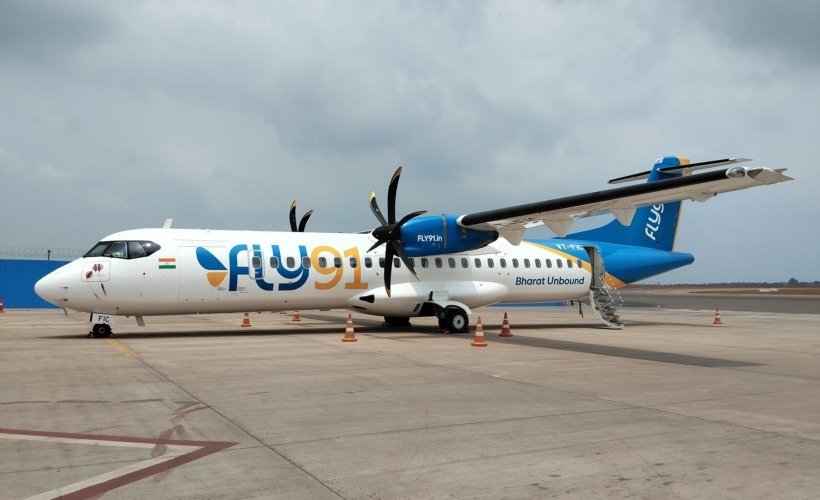
From its home base in Goa, FLY91, a pure play regional airline, is taking rapid strides with a simple mission: to make flying easier for India’s tier-two and tier-three towns. Led by CEO and MD Manoj Chacko, the airline is rooted in the idea that reliable, affordable air travel can connect families, businesses and communities that were long cut off. He tells Business Goa about the planning and strategy which went into ensuring that the new airline headquartered in Goa took off and soared high
In the vast and rapidly expanding landscape of Indian aviation, a new name has emerged with a clear and compelling vision: FLY91. This pure play regional airline, headquartered in the picturesque state of Goa, is not merely another player in a crowded market but a meticulously planned enterprise driven by a profound understanding of India’s unique geographical and demographic tapestry. The airline was established by a team of veteran aviation professionals led by Harsha Raghavan (Chairman) and Manoj Chacko (Managing Director and Chief Executive Officer).
At its operational helm is Manoj Chacko, a seasoned aviation veteran whose decades of experience have culminated in this ambitious venture. FLY91’s mission is simple yet transformative: to democratise air travel by enhancing connectivity to India’s underserved tier two and tier three cities, making air travel accessible to millions who have long relied on less efficient modes of transport.

The Genesis of an Idea
The genesis of FLY91 is rooted in a deep conviction about the untapped potential within India’s smaller towns and cities. Manoj Chacko, with a career spanning over three decades across various facets of the travel and aviation industries, including significant roles at Emirates Airlines, American Express, SOTC and WNS, had long observed a critical gap in the market. While major metropolitan areas enjoyed robust air links, much of India’s hinterland remained largely disconnected from the national aviation network. Over time, Chacko became convinced that tier two and tier three cities could sustain efficient and profitable air services if approached with the right model. His industry experience reinforced the belief that focusing on these underserved regions would create a meaningful niche for a new regional carrier. Chacko, whose extensive background across diverse segments of the travel and hospitality sectors provided him with invaluable insights, articulated the foundational concept succinctly. “The goal was always to build a regional airline that prioritises connectivity for underserved markets. I am thrilled to finally see that vision take flight,” he stated, reflecting on the culmination of years of planning and effort.
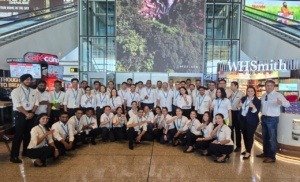
Launch and Brand Identity
FLY91, officially known as Just Udo Aviation Private Limited, was founded on 9 January 2023. The airline commenced commercial operations on 18 March 2024. Its operating base is the Manohar International Airport in Mopa, North Goa, a strategic choice that leverages Goa’s growing importance as a tourism and business hub. The airline’s name, FLY91, is a nod to India’s country dialling code, ‘+91’, symbolising its overarching goal of unifying the nation through seamless air travel. The tagline, ‘Bharat Unbound,’ further encapsulates this vision, reflecting the liberation and opportunities that enhanced connectivity can bring to India.
The airline’s livery, in pastel blue and yellow, draws inspiration from the serene environment of the Arabian Sea, the beaches of Goa and the Western Ghats, reflecting a connection to its Goan roots and the natural beauty of the regions it aims to serve. This thoughtful branding extends to its operational philosophy, which prioritises comfort, reliability and affordability.
Commitment to Regional Connectivity and Strategic Intent
A cornerstone of FLY91’s strategy is its unwavering commitment to regional connectivity. India’s aviation sector is experiencing unprecedented growth, and FLY91 aims to be a significant contributor to this expansion by facilitating ‘last-mile air connectivity.’ Chacko emphasised this point, stating, “India’s tier two and tier three towns and cities are increasingly aspirational. Our focus is to provide safe, reliable and comfortable flights to our customers in such regions. Just as the country code ‘+91’ unifies India; FLY91 aims to unite Indians through accessible air travel and enhanced last-mile connectivity.” This statement highlights the airline’s dual objective of economic development and social integration, recognising that improved air links can catalyse growth in previously isolated areas.
Chacko further stressed that FLY91 was not dependent solely on government subsidies under the Regional Connectivity Scheme-Ude Desh ka Aam Nagrik (RCS-UDAN) scheme, asserting that the airline was built on robust financial planning. “Our business model is built on regional aviation. We want to leverage UDAN, but if UDAN is not there tomorrow, our operations will still remain feasible,” he explained, underlining the airline’s commitment to long-term sustainability independent of external support. This strategic independence is a key differentiator in a market where many regional ventures have struggled due to over-reliance on government incentives.
The founding team undertook an exhaustive analysis of the aviation industry, meticulously studying more than two dozen Indian and international carriers, encompassing both highly successful and defunct airlines. This rigorous research aimed to glean critical insights into the common pitfalls that lead to airline collapse, as well as the foundational principles that underpin enduring success. “Let us copy what the successful airlines did and ensure that we avoid the pitfalls experienced by failed airlines,” Chacko remarked, highlighting the pragmatic and data-driven approach adopted by FLY91. From these analyses emerged FLY91’s core founding principles: a commitment to operating a single aircraft type, maintaining a lean operational structure, ensuring careful capitalisation and implementing disciplined revenue management strategies. These principles form the bedrock of FLY91’s operational efficiency and financial prudence.
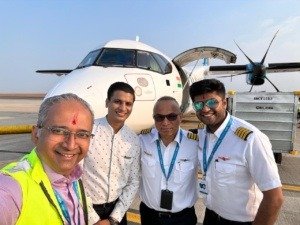
The Business Model: Lean, Efficient, and Regional
The operating model of FLY91 is firmly anchored on the ATR 72-600 turboprop, a 70–78-seat aircraft specifically tailored for short sectors, typically ranging from 45 to 90 minutes in duration. This aircraft choice offers several key advantages crucial for regional operations in India, including its remarkably low fuel burn –approximately 600 kilograms per hour – which contributes significantly to reduced operational costs. Furthermore, the ATR 72-600’s design makes it highly suitable for smaller airfields with limited runway lengths, enabling FLY91 to access a wider range of regional airports that larger jets cannot serve.
Cost-effectiveness is central to FLY91’s model. Its single fleet policy streamlines training, maintenance, scheduling and spares, cutting complexity and overheads. Operating mainly on UDAN routes and smaller airports lowers fuel taxes and infrastructure costs. Onboard service is kept modest, with buy-on-board snacks and drinks instead of full meals, balancing essentials with savings.
A significant aspect of FLY91’s efficiency is its comprehensive adoption of digital operations. The airline has pioneered a paperless, technology-driven workflow across its entire ecosystem. This is exemplified by its digital boarding passes, which are 19 kilobytes in size, a stark contrast to the 380–400 kilobytes typically used by most other airlines in India. Chacko elaborated on this digital commitment, stating, “Our boarding pass is just 19 KB in size – compared to 380 – 400 KB used by most airlines in India. We have built the entire company to be paperless and efficient.” This digital-first approach extends to automated booking and check-in processes, streamlining the passenger experience and reducing the need for traditional, labour-intensive operations.
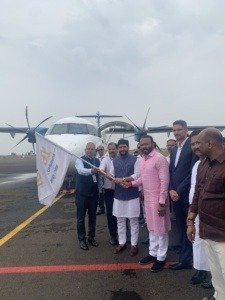
Network Development
Soon after its launch, FLY91 rapidly expanded its network, adding routes to Agatti in Lakshadweep and Jalgaon in Maharashtra, in addition to existing routes. By May 2024, Pune was also integrated into the airline’s growing network. As of today, FLY91 operates to eight destinations: Goa (Mopa), Bengaluru, Hyderabad, Sindhudurg, Jalgaon, Solapur, Pune and Agatti.
FLY91 selects routes using a data-driven approach, weighing factors such as GDP, population, purchasing power, and existing connectivity. The focus is on sectors under 90 minutes, which align with the efficiency of its turboprops. This strategy has opened links to places like Sindhudurg and Jalgaon, where demand was latent but underserved. Early results, according to Chacko, show these routes are performing well and making air travel more accessible.
FLY91 plans steady expansion, targeting six aircraft by end-2024 and adding six to seven annually thereafter. Within five years, the airline aims for 30–35 aircraft, six bases, and service to around 50 cities. Chacko said the second base, likely Navi Mumbai or Noida, will be launched in year two with connections to 8–10 more cities, strengthening its national reach.
Capital Structure and Financial Outlook
FLY91 stands out as one of the few regional carriers in India to be adequately capitalised from its inception. The founders successfully raised approximately `200 crore (equivalent to about US$25 million) over a period of four years, providing a robust financial foundation for the airline’s operations. This substantial initial funding has been supplemented by Viability Gap Funding (VGF) received under the government’s UDAN scheme, further strengthening its financial position.
Chacko expressed confidence in the airline’s current financial standing, indicating that there would be no immediate need for additional equity infusion. He estimated that serving all UDAN routes could yield about `200 crore annually through VGF alone. The airline expects to break even within 18–24 months, with lean operations and cost discipline supporting long-term sustainability in a competitive market.
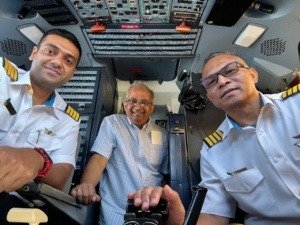
Operational Footprint and Customer Experience
Presently FLY91 has two leased and two owned ATR 72-600s – three are operational while the fourth is set to arrive shortly. This measured expansion underpins its plan to build a pan-India presence across five zones. In July 2025, FLY91 further expanded its Maharashtra connectivity by launching an entirely new route: Goa–Solapur–Goa. This service, featuring both weekly and multi-weekly flights, was inaugurated with a ceremonial water cannon salute at Solapur Airport, marking another milestone in the airline’s network expansion.
FLY91’s in-flight service model is designed to be minimal yet culturally attuned to the preferences of regional travellers. It offers buy-on-board snacks and beverages, providing passengers with options while maintaining a cost-efficient approach. Seat selection charges apply to about five or six rows out of the eighteen available. Complimentary water is provided to all passengers, and the airline supports pet travel and provides comprehensive assistance for physically challenged passengers, including wheelchairs and emergency medical facilities, ensuring an inclusive travel experience. The distinctive black ‘cockpit mask’ on the aircraft’s exterior, reminiscent of designs used by airlines such as Air Canada, adds a modern visual flair.
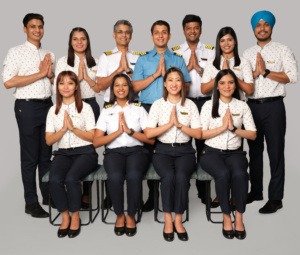
Strategic Collaborations and Tourism Focus
FLY91 has actively sought strategic collaborations to amplify its reach and impact. The airline signed a Memorandum of Understanding with the Department of Goa Tourism to boost domestic tourism by enhancing connectivity to the state’s coastal and cultural destinations. Chacko commented on this partnership, stating, “FLY91 is committed to promoting tourism in Goa through various initiatives that highlight the state’s unique identity.” This collaboration underscores the airline’s recognition of its role as a facilitator of economic growth beyond air transport. A similar MoU has also been signed with the Maharashtra government’s Tourism Department.
The airline is also in discussions with private partners, including tour operators, hospitality groups and corporate entities, to extend its market reach and integrate its regional travel offerings into broader tourism packages and corporate travel solutions. Such partnerships are crucial for creating a comprehensive travel ecosystem that benefits both passengers and stakeholders.

Assorted Cookies
Milestones and Recent Developments
When FLY91 completed a year of operations in March 2025, the airline had achieved significant milestones having operated 3500 flights serving 1.7 lakh passengers across 8 destinations. The airline’s fleet was projected to expand from three to four aircraft in short order, with daily flights expected to increase from the initial 14–16 departures to 32 by late 2025. Chacko also highlighted a strategic financial move, stating that aircraft leasing via a subsidiary in Gujarat’s Gift City provided the company with full asset ownership and enhanced financial flexibility, crucial for long-term growth and stability.
In June 2025, FLY91 unveiled a ‘Monsoon Offer,’ introducing discounts of up to `300 on fares across 20 routes, including Goa. This initiative was designed to stimulate travel during the rainy season, typically associated with lower demand. Further demonstrating its commitment to social outreach, the airline announced a 50 per cent discount on base fares exclusively for Indian defence personnel and their immediate families, including additional baggage allowances – a gesture of gratitude to service members.

These developments underscore FLY91’s proactive approach to market engagement and social responsibility. FLY91 represents a bold experiment in Indian regional aviation, deploying a lean, efficient business model that focuses on bridging transport gaps in smaller cities. With strong equity funding, a focused fleet strategy centred on the ATR 72-600, digitally enabled operat ions, and strategic alignment with tourism stakeholders, the airline has pursued rapid expansion since its launch. The trajectory of FLY91 remains compelling.

Having carried tens of thousands of passengers within months of its launch, and with multiple aircraft on order, FLY91 appears committed to scaling responsibly and sustainably. Over the next five years, the airline aims to operate up to 35 aircraft across six operational bases, serving more than 50 city pairs. If executed with operational discipline and continuous improvement in passenger relations, FLY91 could emerge as one of India’s defining regional airlines –connecting the real India, as encapsulated in its tagline, ‘Bharat Unbound.’





